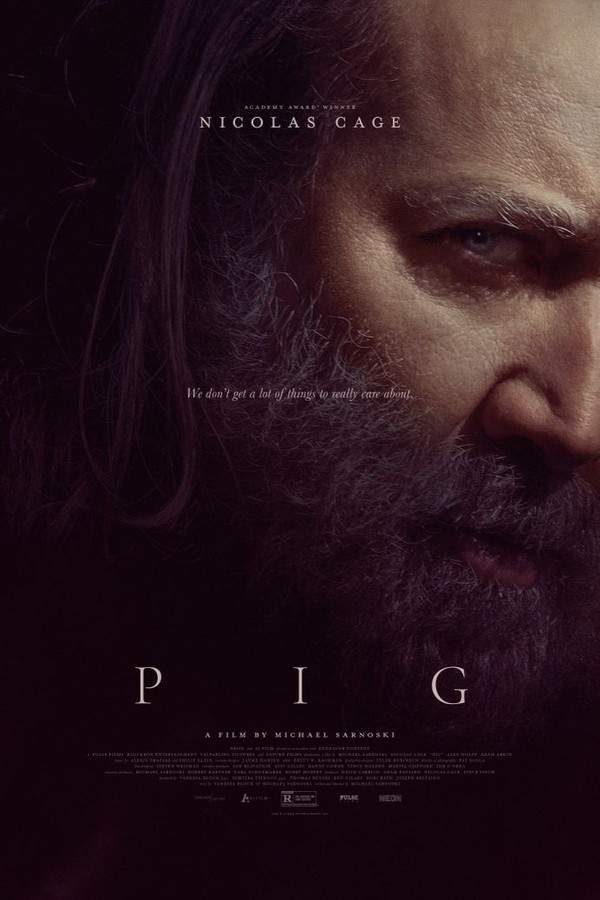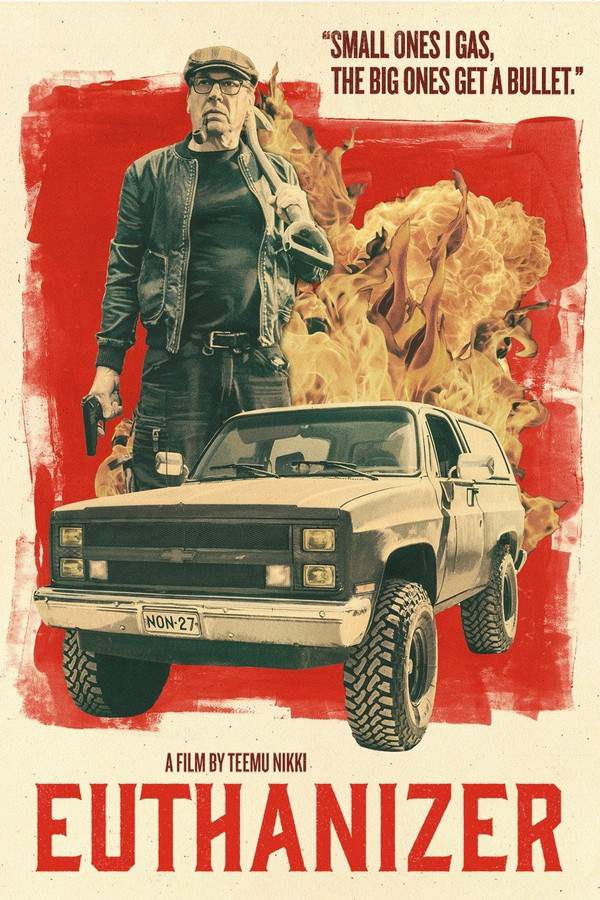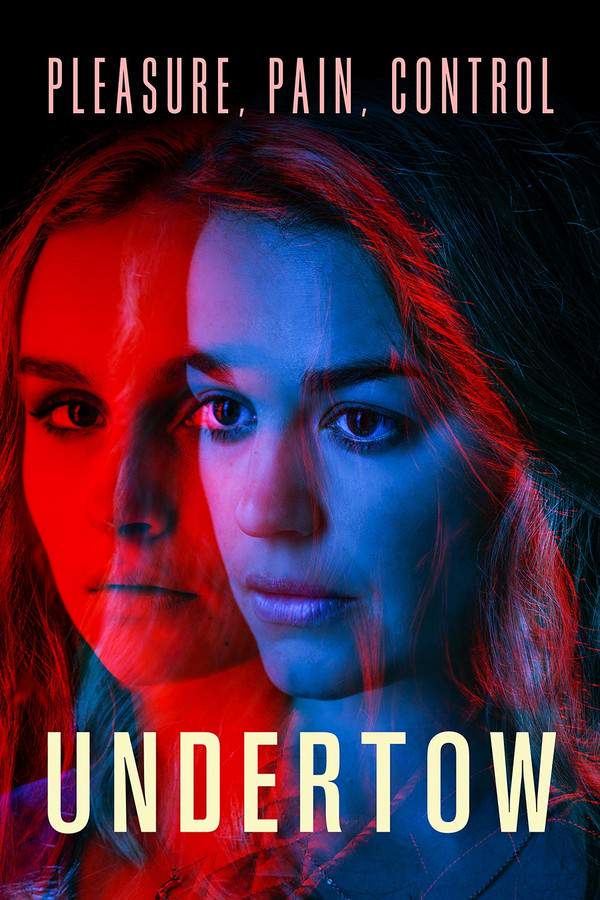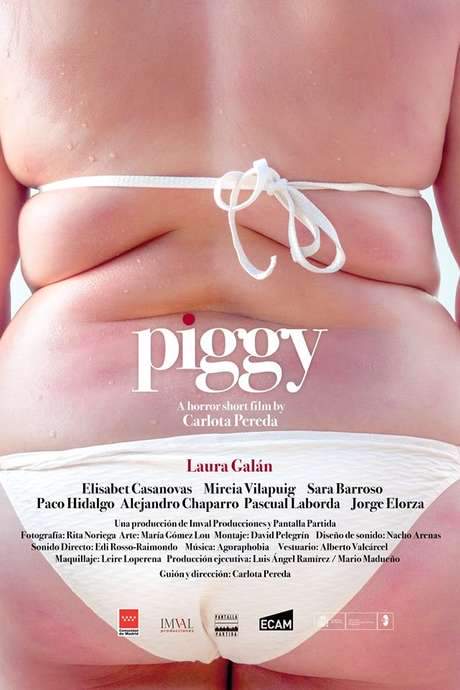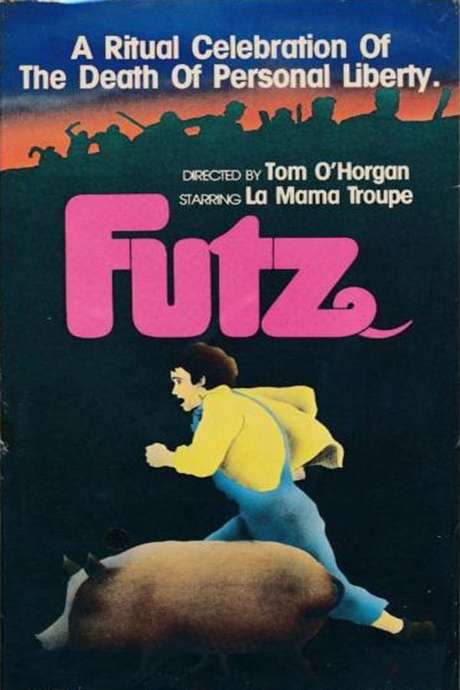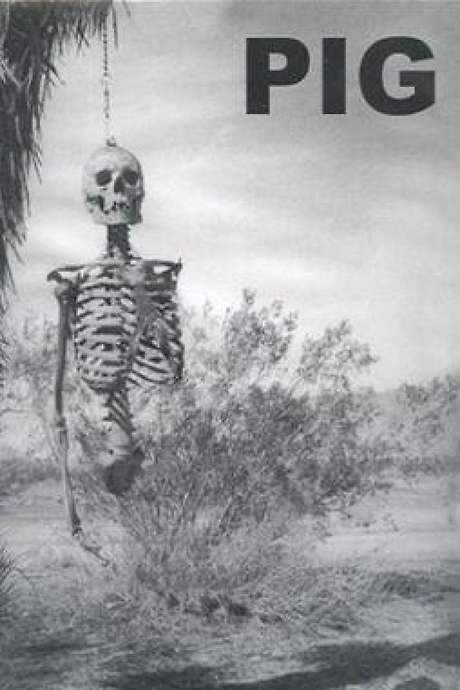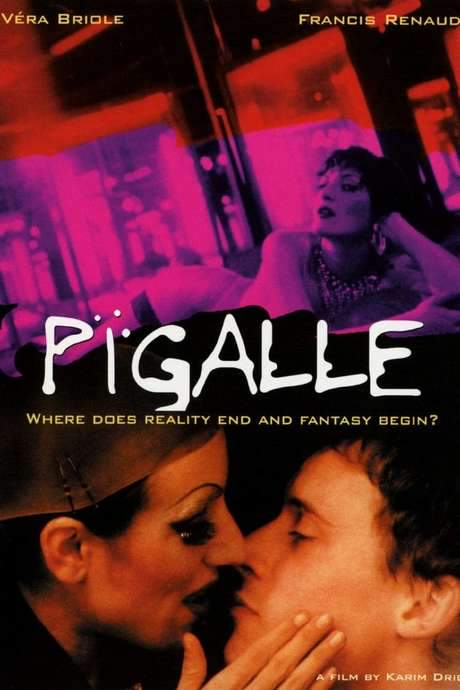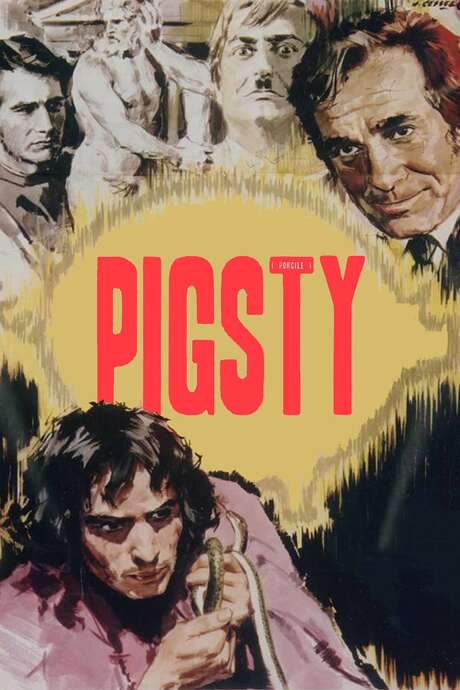
Pigsty
Year: 1969
Runtime: 99 mins
Language: Italian
Director: Pier Paolo Pasolini
Two stark, interwoven tales of isolation and brutality. In an indeterminate past a young cannibal, who killed his father, is condemned to be torn apart by feral beasts, reveling in his triumph. In a later era, Julian, the son of a post‑war German industrialist, rejects human connection, choosing instead to lie down among his farm’s pigs.
Warning: spoilers below!
Haven’t seen Pigsty yet? This summary contains major spoilers. Bookmark the page, watch the movie, and come back for the full breakdown. If you're ready, scroll on and relive the story!
Pigsty (1969) – Full Plot Summary & Ending Explained
Read the complete plot breakdown of Pigsty (1969), including all key story events, major twists, and the ending explained in detail. Discover what really happened—and what it all means.
The film unfolds through two parallel narratives that probe the darkest corners of human nature, tracing a thread between ancient violence and modern complicity.
In the first tale, set around 1500 on the windswept slopes of Etna in Sicily, a young man wanders a volcanic landscape with almost no dialogue until a final, solitary line. The Cannibale, Pierre Clémenti, begins by killing and eating insects and small animals, fleeing garrisons, and approaching only the remains of others. As his hunger intensifies, he dares to taste human flesh, and soon other travelers—some women among them—join his feral journey. The raids trigger fear in a nearby village, which eventually encircles the cannibals. During the capture, Clémenti’s character utters a chilling tagline:
I killed my father, I ate human flesh and I quiver with joy.
The prisoners are bound to poles and left to be devoured by stray dogs, a stark tableau of collective fear and brutality.
This story probes the raw, unshaped potential for destruction that lies within individuals when social norms are stripped away, and it questions how communities react when faced with acts that defy civilization itself.
In the second narrative, set in 1967 in a villa at Godesberg, Germany, a very different type of confinement unfolds. Julian, Jean-Pierre Léaud, lives a narrow, almost monastic life that keeps his radical fiancée Ida, Anne Wiazemsky at arm’s length as she pursues her own political commitments. Julian’s father, Herr Klotz, Alberto Lionello, is a successful industrialist who presses his son toward marriage and social acceptance, while Julian harbors a secret obsession: he sneaks into a pigsty to lie with the pigs whenever the chance arises.
The atmosphere at the villa thickens as two men arrive. Hans Günther, Marco Ferreri, introduces Mr. Herdhitze, Ugo Tognazzi, a rival and old comrade whose macabre past hints at dark experiments and a chilling detachment from human norms. The elder Klotz is tempted to leverage Herdhitze’s presence for his own ends after hearing rumors of Herdhitze’s grim background, including alleged dealings with corpses. Herdhitze’s proposal to join the family business tests the father’s willingness to compromise, but the revelation about Julian’s pig-life drives him toward a sobering, if reluctant, reconsideration.
As the drama unfolds, Julian reaches a moment of frank confrontation with Ida about love, even as his personal alliances crumble. Ida ultimately leaves to marry someone else, and the two men continue negotiating power and partnership as the house becomes a stage for moral compromise. Soon after, Julian returns to the pigsty and allows himself to be devoured by the animals. His fate is implied rather than shown, as Herdhitze and the villa’s gardener, Maracchione, played by Ninetto Davoli, discuss his end in quiet, knowing terms: with nothing left of Julian, the scandal is to be kept secret.
This second thread weaves a deliberate link between the Third Reich and postwar Wirtschaftswunder Germany, presenting a meditation on how the consequences of parental choices reverberate through the next generation. Both stories juxtapose rebellion and apathy, suggesting that the actions or indifference of parents can steer their children toward extremes, whether through direct violence or through choices that normalize brutality in everyday life.
Across both narratives, the film builds a meditation on power, complicity, and human capacity for destruction, all rendered with a restrained, observational style that invites reflection rather than sensationalism. The stark contrast between the historical cruelty of the early tale and the postwar German milieu of the second story underscores a broader inquiry: how societies remember past horrors and what they permit in the name of progress, security, or prosperity.
Last Updated: October 09, 2025 at 09:26
Unlock the Full Story of Pigsty
Don't stop at just watching — explore Pigsty in full detail. From the complete plot summary and scene-by-scene timeline to character breakdowns, thematic analysis, and a deep dive into the ending — every page helps you truly understand what Pigsty is all about. Plus, discover what's next after the movie.
Pigsty Timeline
Track the full timeline of Pigsty with every major event arranged chronologically. Perfect for decoding non-linear storytelling, flashbacks, or parallel narratives with a clear scene-by-scene breakdown.

Similar Movies to Pigsty
Discover movies like Pigsty that share similar genres, themes, and storytelling elements. Whether you’re drawn to the atmosphere, character arcs, or plot structure, these curated recommendations will help you explore more films you’ll love.
Explore More About Movie Pigsty
Pigsty (1969) Scene-by-Scene Movie Timeline
Pigsty (1969) Movie Characters, Themes & Settings
Pigsty (1969) Spoiler-Free Summary & Key Flow
Movies Like Pigsty – Similar Titles You’ll Enjoy
Pig (2021) Spoiler-Packed Plot Recap
Euthanizer (2018) Full Summary & Key Details
Undertow (2004) Story Summary & Characters
Squeal (2022) Movie Recap & Themes
Piggy (2018) Story Summary & Characters
Disco Pigs (2001) Full Summary & Key Details
Blood for Flesh (2019) Film Overview & Timeline
Long Pigs (2007) Film Overview & Timeline
Wedding Trough (1974) Detailed Story Recap
Daddy’s Deadly Darling (1973) Spoiler-Packed Plot Recap
Man, Woman and Beast (1977) Film Overview & Timeline
Pig Hunt (2008) Full Summary & Key Details
Futz (1969) Complete Plot Breakdown
Pig (1999) Spoiler-Packed Plot Recap
Pigalle (1994) Full Movie Breakdown



